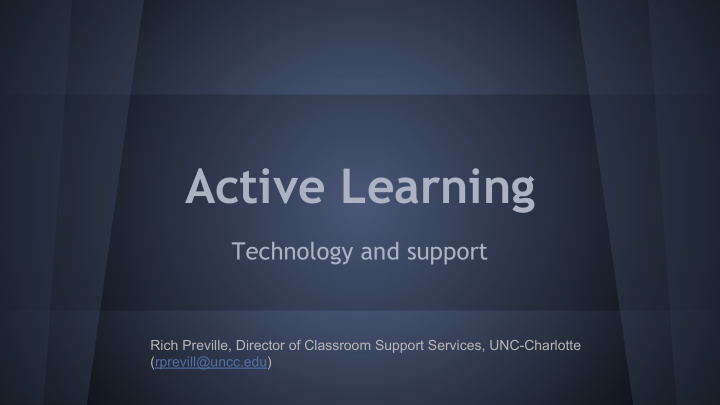



Active Learning Technology and support Rich Preville, Director of Classroom Support Services, UNC-Charlotte (rprevill@uncc.edu)
Technical function Base of the pyramid
Typical operational needs ● Non-centralized instruction delivery ○ Instructor led and peer-to-peer instruction ● Matrix content distribution ○ Lines of sight and sound dependent, not just technology dependent! ● Communication in personal and social zones ○ 18 inches to 12 feet
Typical technologies ● Internet-connected PC ● Annotation input device ● Document camera or equivalent ● Writing surfaces ● LCD displays ● Projectors and screens
Evolving needs The top of the pyramid may be evolving needs, especially if the program or practice is new and not yet standardized, or even able to be standardized.
Basic question How do the technologies support instructor pedagogies or teaching methods? Answers determine impact of non-functioning or non-optimally functioning technologies.
What determines support priority? Impact? ● Primary component down ○ Room cannot support teaching ● Primary component not working correctly ○ Room cannot support effective teaching
Impact continued ● Secondary component down ○ Impact specific teaching method ● Secondary component not working correctly ○ Impact specific teaching method efficacy
Expectations Do instructors know what to expect when primary and secondary components malfunction?
Communication Is there a means of communicating to all impacted users?
UNC Charlotte ALC Support ● Student tech on site ● HELP button ● Remote desktop assistance ● Remote room control ● Segway dispatch ● 10 or fewer minute resolution ● Defined escalation process
Recommend
More recommend